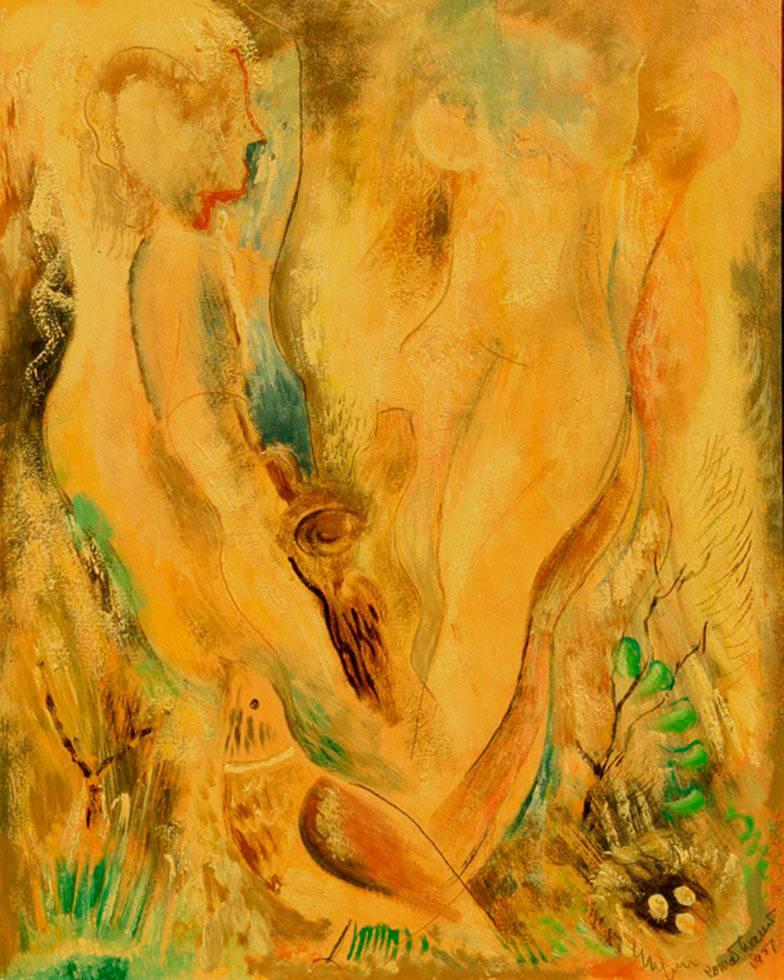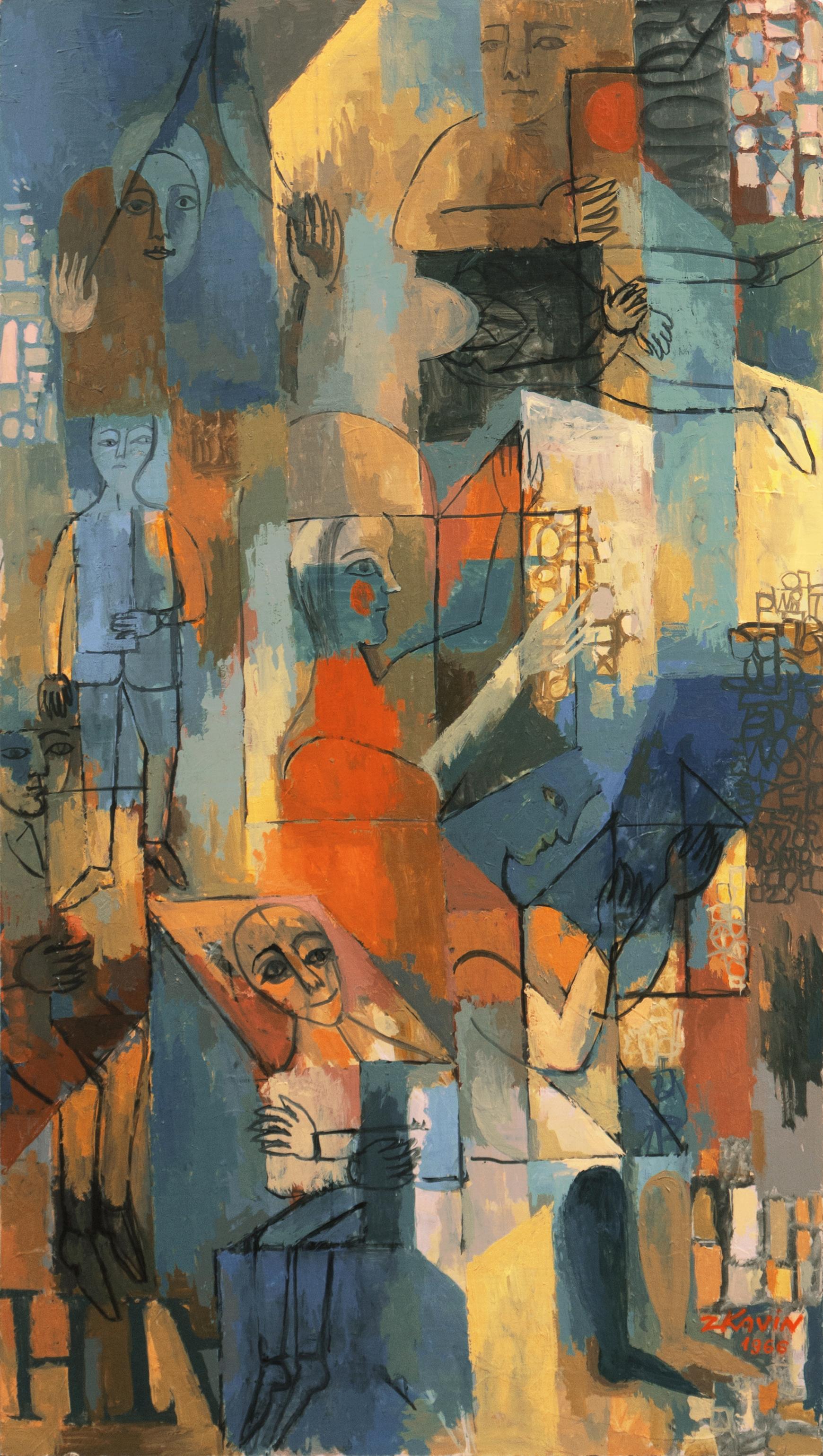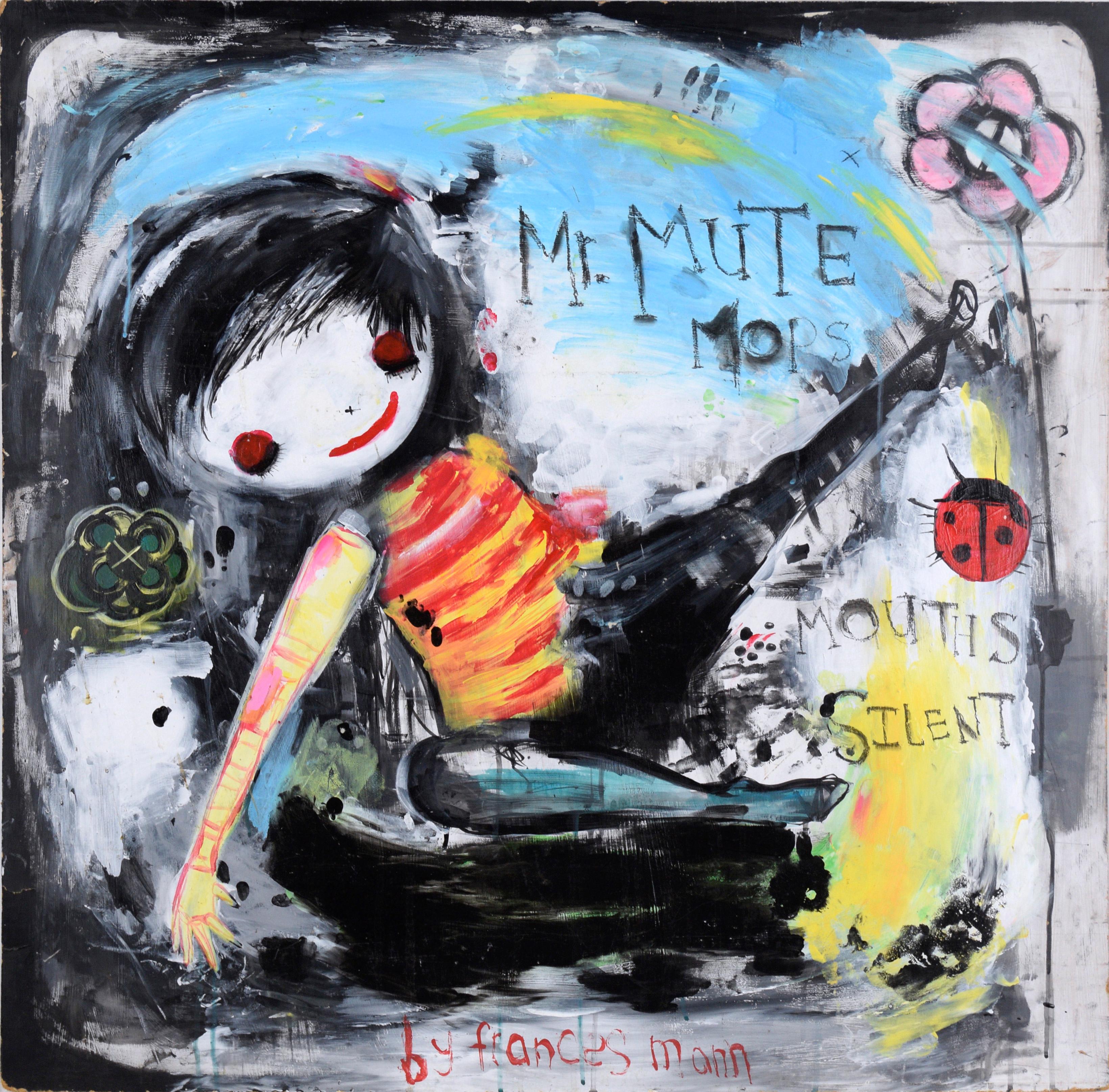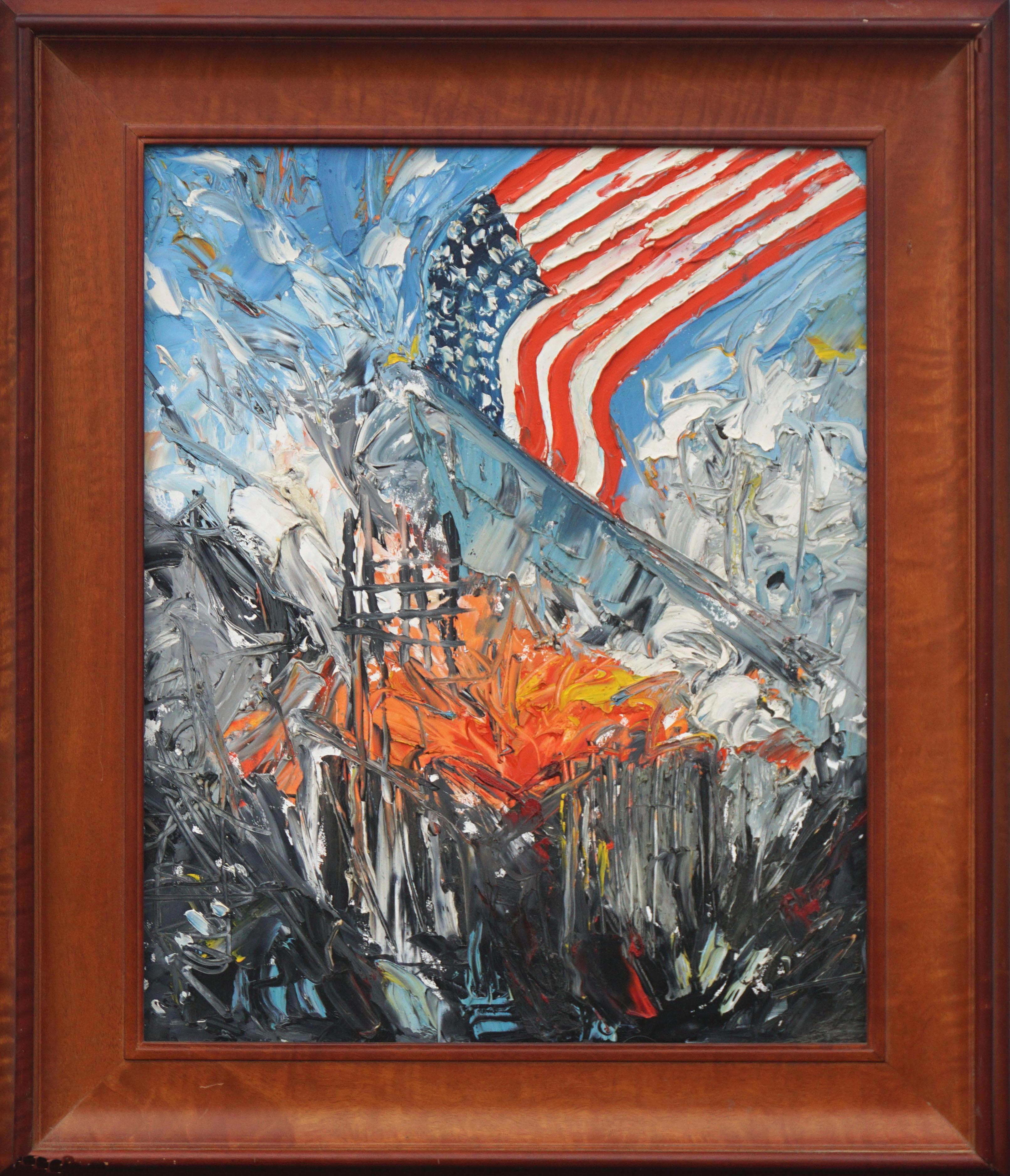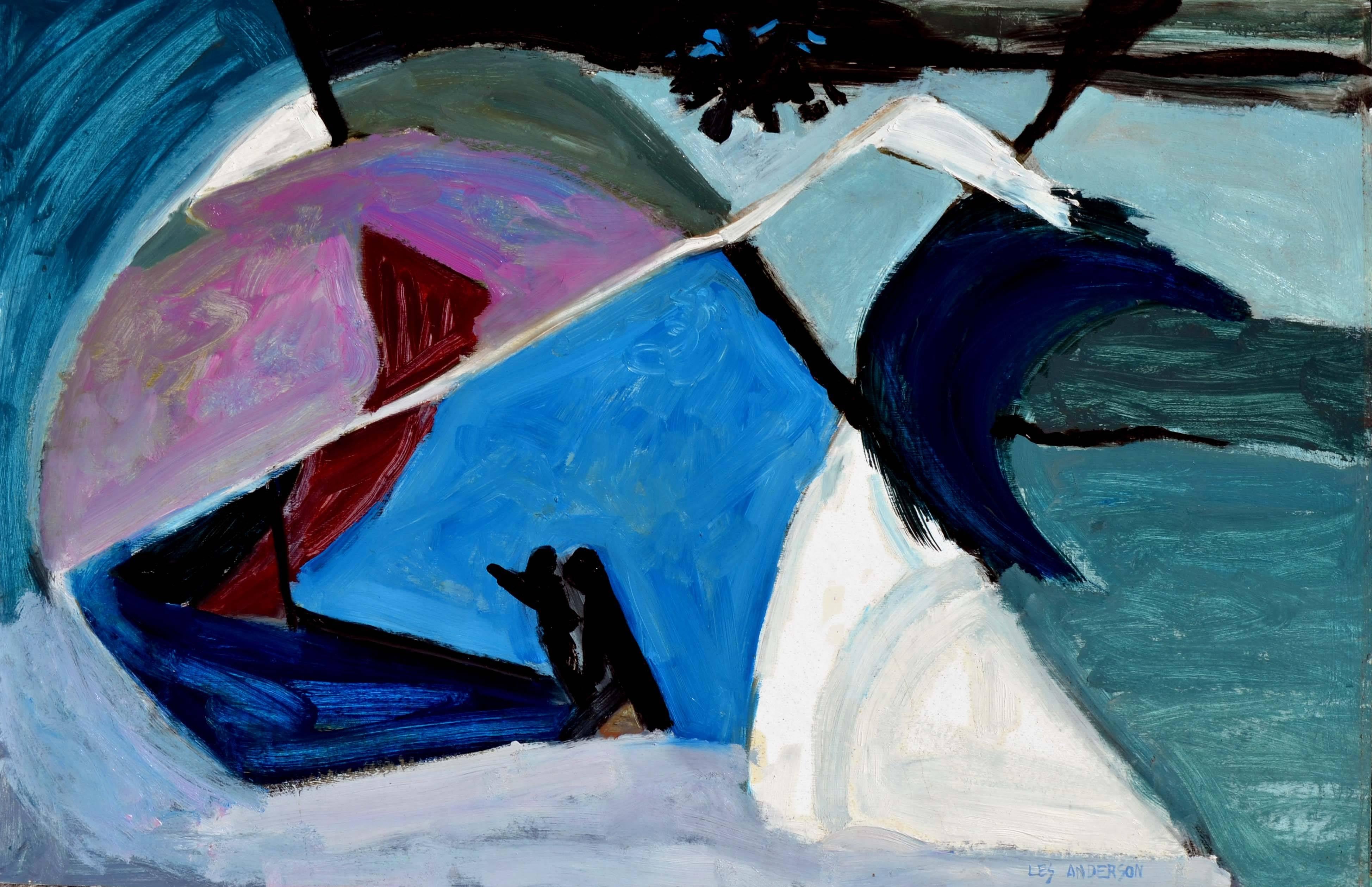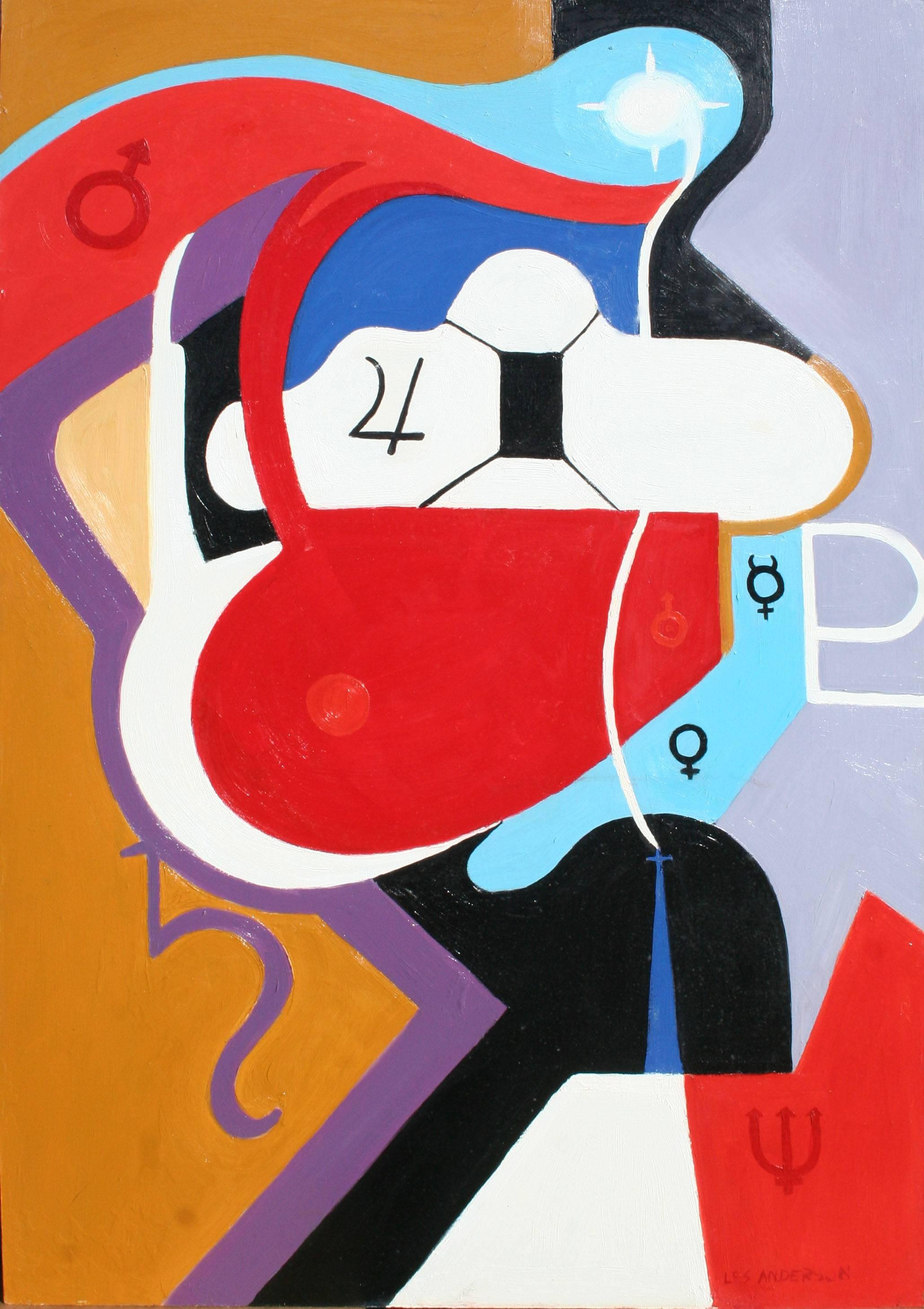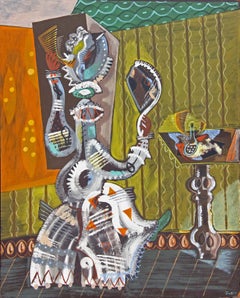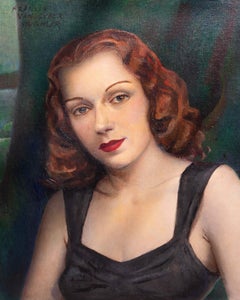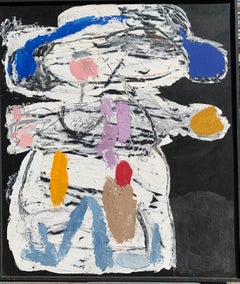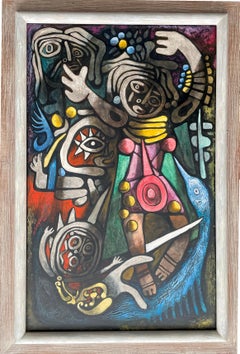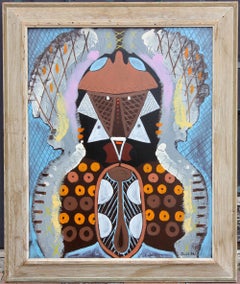
American Abstract Painting by Zoute, 1953
View Similar Items
Want more images or videos?
Request additional images or videos from the seller
1 of 6
Leon Salter ZouteAmerican Abstract Painting by Zoute, 19531953
1953
About the Item
- Creator:Leon Salter Zoute (1903 - 1976, American)
- Creation Year:1953
- Dimensions:Height: 36 in (91.44 cm)Width: 30 in (76.2 cm)Depth: 2 in (5.08 cm)
- Medium:
- Movement & Style:
- Period:
- Condition:Painting in good condition. Very minor wear to frame.
- Gallery Location:Rochester, NY
- Reference Number:1stDibs: LU165028985672
About the Seller
5.0
Vetted Seller
These experienced sellers undergo a comprehensive evaluation by our team of in-house experts.
1stDibs seller since 2021
27 sales on 1stDibs
Typical response time: 12 hours
More From This SellerView All
- Abstract American Modernist Oil Painting "Dressing for the Party" by Zoute 1951Located in Rochester, NYAbstract Modernist oil painting by Zoute dated 1951. Oil on Masonite. I believe the subject in the painting is the artist's wife Thelma Salter. Zoute used himself and his wife almost exclusively as models. Painted in 1951. Unframed. Presented by Joseph Dasta Antiques. Zoute (Born-Leon Salter, 1903-1976) was self-taught and well exhibited during his lifetime. He painted from 1940-1954 (he stopped painting at this later date due to his wife's illness and death and never painted again) A self-taught artist, he was part of the great modern wave. He exhibited with many of the most notable artists of the day such as Picasso, Braque, Klee and others at the invitation only State University of Iowa International Show 1946-1947. He had numerous one man shows at NYC galleries, Mortimer Levitt / Joseph Heller...Category
Mid-20th Century Modern Figurative Paintings
MaterialsOil, Masonite
- Striking Hollywood Regency Portrait of a Red Haired Lady by Kughler 1932By Francis Vandeveer KughlerLocated in Rochester, NYHollywood regency portrait painting of a young woman by Francis Kughler (American 1901-1970). Oil on canvas board. Circa 1932. Unframed. Born in New York City in 1901, Francis Vandeveer Kughler attended Cooper Union, the Mechanics' Institute, and the National Academy of Design School of Art where he met Charlotte Livingston, an artist, whom he was later to marry. During this period he was the winner of a Tiffany scholarship, which provided him a summer of landscape painting at the Louis Comfort Tiffany estate at Oyster Bay, L.I. In the 1940s, Kughler became the President of the Salmagundi Club, a well-known art club in Washington Square in New York City.Well-known as a muralist, society portrait painter and lithographer, he was a prolific painter who made cityscapes, landscapes, and nudes. He and his wife, Charlotte Livingston, lived and worked in Bronx, New York. mid century modern wpa impressionist...Category
Mid-20th Century Modern Figurative Paintings
MaterialsMasonite, Oil
- Impressionist Portrait Painting of Circus Clown 1950Located in Rochester, NYBold portrait of an introspective circus clown. Rich colors. Detailed circus background. Oil on masonite. Signed Klotz. Dated 1950. Unfarmed. american Emmett Kelly...Category
Mid-20th Century Impressionist Figurative Paintings
MaterialsMasonite, Oil
- Abstract American Modernist Oil Painting "My Dancing Shoes" by Zoute 1941Located in Rochester, NYAbstract Modernist oil painting by Zoute dated 1941. Oil on board. Unframed. Zoute (Born-Leon Salter, 1903-1976) was self-taught and well exhibited during his lifetime. He painted from 1940-1954 (he stopped painting at this later date due to his wife's illness and death and never painted again) A self-taught artist, he was part of the great modern wave. He exhibited with many of the most notable artists of the day such as Picasso, Braque, Klee and others at the invitation only State University of Iowa International Show 1946-1947. He had numerous one man shows at NYC galleries, Mortimer Levitt / Joseph Heller...Category
Mid-20th Century Modern Figurative Paintings
MaterialsOil, Board
- Greco Roman Classical Wrestlers Oil PaintingLocated in Rochester, NYLate 20th century modernist oil painting of Greco Roman wrestlers done in the classical style. By David Loeb. Oil on handmade paper. Signed on reverse and dated 1989. Loeb was born in 1953 and raised in Chappaqua, New York, David Loeb’s mother and her identical twin were painters, and he has been painting since childhood. He studied with Gillian Pederson-Krag at Cornell University; Reed Kay at Boston University; Louis Finkelstein, Wolf Kahn and Philip Guston at the Yale Summer School of Art and Music; and attended graduate school at Indiana University, Bloomington, where he studied with Robert Barnes...Category
20th Century Modern Figurative Paintings
MaterialsOil, Handmade Paper
- Impressionist Painting Woman in an Interior "Work" by Ruskin Williams 1940'sLocated in Rochester, NYImpressionist painting of a woman at work. Titled "Ouvrages" or Work. By American artist Ruskin Williams (1888-1966). Oil on canvas. Circa 1940's. Unframed. Presented by Joseph Dasta...Category
Mid-20th Century Impressionist Figurative Paintings
MaterialsOil, Canvas
You May Also Like
- 1950s "Boy With Mittens" Oil Impasto Figurative Painting Brooklyn Museum ArtistBy Sylvia RutkoffLocated in Arp, TXSylvia Rutkoff (1919-2011) Sr10-1 c.1950s “Boy with Mittens” Oil impasto on Masonite 36x42.5 black wood gallery frame Signed on reverse in paint Collection acquired from family estat...Category
Mid-20th Century Modern Abstract Paintings
MaterialsGesso, Masonite, Oil
- SpringBy Konrad CramerLocated in New York, NYOil on masonite Signed and dated, l.r. This painting is offered by ClampArt, located in New York City. About the artist: Konrad Cramer grew up in Wurtzburg, Germany, and attended the Karlsruhe Academy. He was a member of Der Blaue Reiter...Category
1940s Modern Abstract Paintings
MaterialsMasonite, Oil
- Ceremonial Dancers oil and tempera painting by Julio De DiegoBy Julio de DiegoLocated in Hudson, NYArtwork measures 48" x 30" and framed 56 ¼" x 38 ¼" x 3" Provenance: John Heller Gallery, NYC, circa 1975 (label verso) The artist's daughter Corbino Galleries, Sarasota, FL (1990)...Category
1940s Modern Abstract Paintings
MaterialsMasonite, Oil, Tempera
- St. Atomic oil and tempera painting by Julio de DiegoBy Julio de DiegoLocated in Hudson, NYJulio De Diego’s Atomic Series paintings made an extraordinary statement regarding the shock and fear that accompanied the dawn of the nuclear age. In the artist’s own words, “Scientists were working secretly to develop formidable powers taken from the mysterious depths of the earth - with the power to make the earth useless! Then, the EXPLOSION! . . . we entered the Atomic Age, and from there the neo-Atomic war begins. Explosions fell everywhere and man kept on fighting, discovering he could fight without flesh.” To execute these works, De Diego developed a technique of using tempera underpainting before applying layer upon layer of pigmented oil glazes. The result is paintings with surfaces which were described as “bonelike” in quality. The forms seem to float freely, creating a three-dimensional visual effect. In the 1954 book The Modern Renaissance in American Art, author Ralph Pearson summarizes the series as “a fantastic interpretation of a weighty theme. Perhaps it is well to let fantasy and irony appear to lighten the devastating impact. By inverse action, they may in fact increase its weight.” Exhibited 1950 University of Illinois at Urbana "Contemporary American Painting" 1964 Marion Koogler McNay Art Institute, San Antonio, Texas This work retains its original frame which measures 54" x 36" x 2". About this artist: Julio De Diego crafted a formidable persona within the artistic developments and political struggles of his time. The artist characterized his own work as “lyrical,” explaining, “through the years, the surrealists, the social-conscious painters and the others tried to adopt me, but I went my own way, good, bad or indifferent.” [1] His independence manifested early in life when de Diego left his parent’s home in Madrid, Spain, in adolescence following his father’s attempts to curtail his artistic aspirations. At the age of fifteen he held his first exhibition, set up within a gambling casino. He managed to acquire an apprenticeship in a studio producing scenery for Madrid’s operas, but moved from behind the curtains to the stage, trying his hand at acting and performing as an extra in the Ballet Russes’ Petrouchka with Nijinsky. He spent several years in the Spanish army, including a six-month stretch in the Rif War of 1920 in Northern Africa. His artistic career pushed ahead as he set off for Paris and became familiar with modernism’s forays into abstraction, surrealism, and cubism. The artist arrived in the U.S. in 1924 and settled in Chicago two years later. He established himself with a commission for the decoration of two chapels in St. Gregory’s Church. He also worked in fashion illustration, designed magazine covers and developed a popular laundry bag for the Hotel Sherman. De Diego began exhibiting through the Art Institute of Chicago in 1929, and participated in the annual Chicago Artists Exhibitions, Annual American Exhibitions, and International Water Color Exhibitions. He held a solo exhibition at the Art Institute of Chicago in the summer of 1935. Though the artist’s career was advancing, his family life had deteriorated. In 1932 his first marriage dissolved, and the couple’s young daughter Kiriki was sent to live with friend Paul Hoffman. De Diego continued to develop his artistic vocabulary with a growing interest in Mexican art. He traveled throughout the country acquainting himself with the works of muralists such as Carlos Merida, and also began a collection of small native artifacts...Category
1940s American Modern Abstract Paintings
MaterialsMasonite, Oil, Tempera
- The Magician oil and tempera painting by Julio de DiegoBy Julio de DiegoLocated in Hudson, NYJulio De Diego’s Atomic Series paintings made an extraordinary statement regarding the shock and fear that accompanied the dawn of the nuclear age. In the artist’s own words, “Scientists were working secretly to develop formidable powers taken from the mysterious depths of the earth - with the power to make the earth useless! Then, the EXPLOSION! . . . we entered the Atomic Age, and from there the neo-Atomic war begins. Explosions fell everywhere and man kept on fighting, discovering he could fight without flesh.” To execute these works, De Diego developed a technique of using tempera underpainting before applying layer upon layer of pigmented oil glazes. The result is paintings with surfaces which were described as “bonelike” in quality. The forms seem to float freely, creating a three-dimensional visual effect. In the 1954 book The Modern Renaissance in American Art, author Ralph Pearson summarizes the series as “a fantastic interpretation of a weighty theme. Perhaps it is well to let fantasy and irony appear to lighten the devastating impact. By inverse action, they may in fact increase its weight.” Exhibited 1964 Marion Koogler McNay Art Institute, San Antonio, Texas This work retains its original frame which measures 54" x 42" x 2" About this artist: Julio De Diego crafted a formidable persona within the artistic developments and political struggles of his time. The artist characterized his own work as “lyrical,” explaining, “through the years, the surrealists, the social-conscious painters and the others tried to adopt me, but I went my own way, good, bad or indifferent.” [1] His independence manifested early in life when de Diego left his parent’s home in Madrid, Spain, in adolescence following his father’s attempts to curtail his artistic aspirations. At the age of fifteen he held his first exhibition, set up within a gambling casino. He managed to acquire an apprenticeship in a studio producing scenery for Madrid’s operas, but moved from behind the curtains to the stage, trying his hand at acting and performing as an extra in the Ballet Russes’ Petrouchka with Nijinsky. He spent several years in the Spanish army, including a six-month stretch in the Rif War of 1920 in Northern Africa. His artistic career pushed ahead as he set off for Paris and became familiar with modernism’s forays into abstraction, surrealism, and cubism. The artist arrived in the U.S. in 1924 and settled in Chicago two years later. He established himself with a commission for the decoration of two chapels in St. Gregory’s Church. He also worked in fashion illustration, designed magazine covers and developed a popular laundry bag for the Hotel Sherman. De Diego began exhibiting through the Art Institute of Chicago in 1929, and participated in the annual Chicago Artists Exhibitions, Annual American Exhibitions, and International Water Color Exhibitions. He held a solo exhibition at the Art Institute of Chicago in the summer of 1935. Though the artist’s career was advancing, his family life had deteriorated. In 1932 his first marriage dissolved, and the couple’s young daughter Kiriki was sent to live with friend Paul Hoffman. De Diego continued to develop his artistic vocabulary with a growing interest in Mexican art. He traveled throughout the country acquainting himself with the works of muralists such as Carlos Merida, and also began a collection of small native artifacts...Category
1940s American Modern Abstract Paintings
MaterialsMasonite, Oil, Tempera
- Inevitable Day – Birth of the Atom oil and tempera painting by Julio De DiegoBy Julio de DiegoLocated in Hudson, NYJulio De Diego’s Atomic Series paintings made an extraordinary statement regarding the shock and fear that accompanied the dawn of the nuclear age. In the artist’s own words, “Scientists were working secretly to develop formidable powers taken from the mysterious depths of the earth - with the power to make the earth useless! Then, the EXPLOSION! . . . we entered the Atomic Age, and from there the neo-Atomic war begins. Explosions fell everywhere and man kept on fighting, discovering he could fight without flesh.” To execute these works, De Diego developed a technique of using tempera underpainting before applying layer upon layer of pigmented oil glazes. The result is paintings with surfaces which were described as “bonelike” in quality. The forms seem to float freely, creating a three-dimensional visual effect. In the 1954 book The Modern Renaissance in American Art, author Ralph Pearson summarizes the series as “a fantastic interpretation of a weighty theme. Perhaps it is well to let fantasy and irony appear to lighten the devastating impact. By inverse action, they may in fact increase its weight.” Bibliography Art in America, April 1951, p.78 About this artists: Julio De Diego crafted a formidable persona within the artistic developments and political struggles of his time. The artist characterized his own work as “lyrical,” explaining, “through the years, the surrealists, the social-conscious painters and the others tried to adopt me, but I went my own way, good, bad or indifferent.” [1] His independence manifested early in life when de Diego left his parent’s home in Madrid, Spain, in adolescence following his father’s attempts to curtail his artistic aspirations. At the age of fifteen he held his first exhibition, set up within a gambling casino. He managed to acquire an apprenticeship in a studio producing scenery for Madrid’s operas, but moved from behind the curtains to the stage, trying his hand at acting and performing as an extra in the Ballet Russes’ Petrouchka with Nijinsky. He spent several years in the Spanish army, including a six-month stretch in the Rif War of 1920 in Northern Africa. His artistic career pushed ahead as he set off for Paris and became familiar with modernism’s forays into abstraction, surrealism, and cubism. The artist arrived in the U.S. in 1924 and settled in Chicago two years later. He established himself with a commission for the decoration of two chapels in St. Gregory’s Church. He also worked in fashion illustration, designed magazine covers and developed a popular laundry bag for the Hotel Sherman. De Diego began exhibiting through the Art Institute of Chicago in 1929, and participated in the annual Chicago Artists Exhibitions, Annual American Exhibitions, and International Water Color Exhibitions. He held a solo exhibition at the Art Institute of Chicago in the summer of 1935. Though the artist’s career was advancing, his family life had deteriorated. In 1932 his first marriage dissolved, and the couple’s young daughter Kiriki was sent to live with friend Paul Hoffman. De Diego continued to develop his artistic vocabulary with a growing interest in Mexican art. He traveled throughout the country acquainting himself with the works of muralists such as Carlos Merida, and also began a collection of small native artifacts...Category
1940s American Modern Abstract Paintings
MaterialsMasonite, Oil, Tempera

